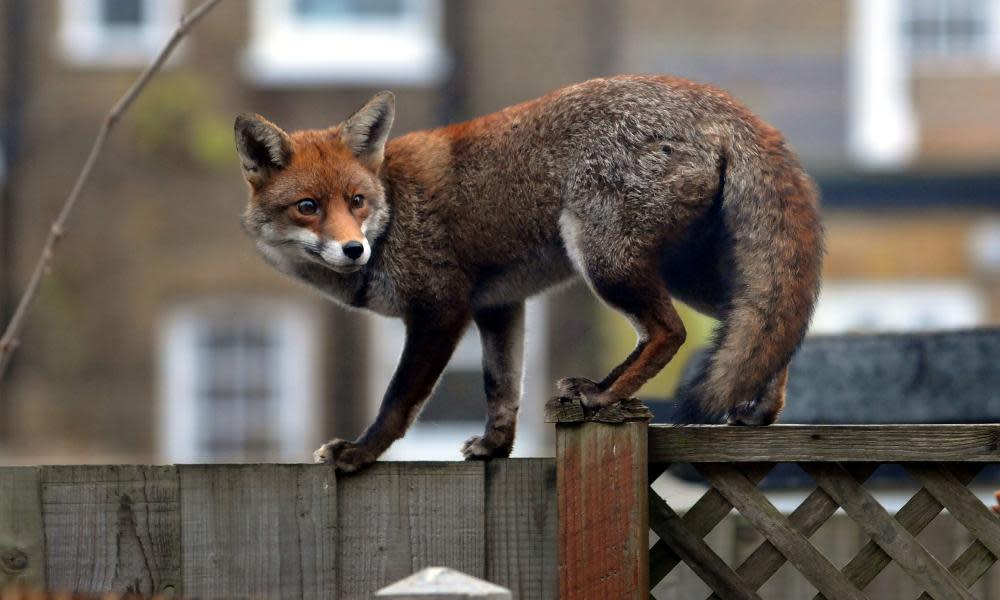Urban foxes number one for every 300 residents, study suggests

The number of urban foxes in England has quadrupled in the past 20 years, according to a study that estimates there are nearly 150,000 in England, or about one for every 300 urban residents.
While the number of foxes is declining overall in the UK, the study by Brighton and Reading universities has found that Bournemouth tops the charts with the highest concentration of urban foxes in the UK at 23 per square kilometre.
London was not far behind with 18, followed by Bristol with 16 and Newcastle with 10.
The researchers, headed by the mammalian biologist Dawn Scott and the behavioural zoologist Phil Baker, tagged foxes with transmitters to track their interactions and territories, and asked residents from eight cities to report sightings during July and August from 2013 to 2015.
Scott said the abundance of suburban greenery may have led to the higher density in Bournemouth“Housing types and the suburban structure in Bournemouth might be slightly more suitable than the areas in London we surveyed to support higher fox numbers,” she said.
Through combining the sightings with models constructed from the tagging, they were able to make calculations of the density of foxes in towns and cities across the country.
It is thought there were only 33,000 foxes living in towns and cities during the 1990s, and a 2014 study found that 91% of urban areas previously predicted to support few or no foxes in the early 2000s now have them.
Trevor Williams, one of the founders of The Fox Project, which has operated a fox rescue service and wildlife hospital since 1993 and advises councils on humane fox deterrents, disputed the idea that numbers are increasing. His team rescues foxes in urban, suburban and rural areas.
“I think what’s happening is that we’re taking over more rural areas and therefore the foxes that live there become urban foxes, but the other thing that comes to mind is that possibly the previous studies underestimated because of poorer research and samplings.
“I just don’t see that the population has increased at all in terms of enquiries, or in terms of casualties. We get around 700 to 750 coming in to our hospital and we raise about 220 and 250 cubs each year, and that hasn’t changed in many years either,” he said.
Whether urban foxes are dangerous has been a point of contention for many years. There have been widely reported cases of foxes killing young children and maiming babies in cities, but according to the RSPCA, such incidents are rare.
Ian Tokelove, a spokesman for the London Wildlife Trust, said he was not surprised by the findings. “It’s what we see in the streets around us. They are much more common. They have a pretty hard time out in the countryside and in places like London they can find a lot of the food they require and the habitats they need. There’s lots of worms in our gardens and they’re particularly partial to London’s rats and mice.
“I think Bournemouth is probably leafier and greener than London, so it’s not a surprise that Bournemouth has more, but a lot of people don’t realise that London supports a huge amount of wildlife.”

 Yahoo News
Yahoo News 
